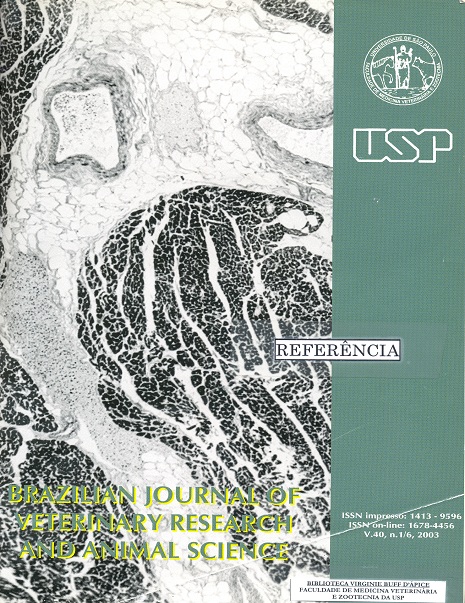Retinal nerve fiber layer thickness analysis in normal and glaucomatous dogs using laser polarimetry diagnosis
DOI:
https://doi.org/10.1590/S1413-95962003000600003Keywords:
Dog, Glaucoma, Nerve FibersAbstract
Once the glaucomatous damage is progressive and irreversible, studies on the glaucoma onset as well as its development have been discussed. It is known that the early diagnostisis is extremely important to the stabilization and treatment. The retinal nerve fibers layer thickness analysis ''in vivo'' was proposed in human ophthalmology in order to establish the thickness changing, due to glaucoma, and have shown that such findings can be even detected six years priors to the first clinical signs. However, in Veterinary Medicine, such data need to be investigated and discussed. This study used two groups of dogs, a glaucomatous group and a normal group, that had been submitted to the retinal nerve fibers layer analysis through the GDx Nerve Fiber Analyzer. Statistical data showed that the nerve fiber layer of the glaucomatous group was thinner (p < 0.05), sustaining ganglion cells axons loss in glaucomatous eyes, compared to normal eyes.Downloads
Download data is not yet available.
Downloads
Published
2003-01-01
Issue
Section
UNDEFINIED
License
The journal content is authorized under the Creative Commons BY-NC-SA license (summary of the license: https://
How to Cite
1.
Martins ALB, Garcia GA, Pereira J da S, Rodriguez S, Rivera A, Vianna LFCG. Retinal nerve fiber layer thickness analysis in normal and glaucomatous dogs using laser polarimetry diagnosis. Braz. J. Vet. Res. Anim. Sci. [Internet]. 2003 Jan. 1 [cited 2026 Jan. 1];40(6):403-8. Available from: https://revistas.usp.br/bjvras/article/view/11287





